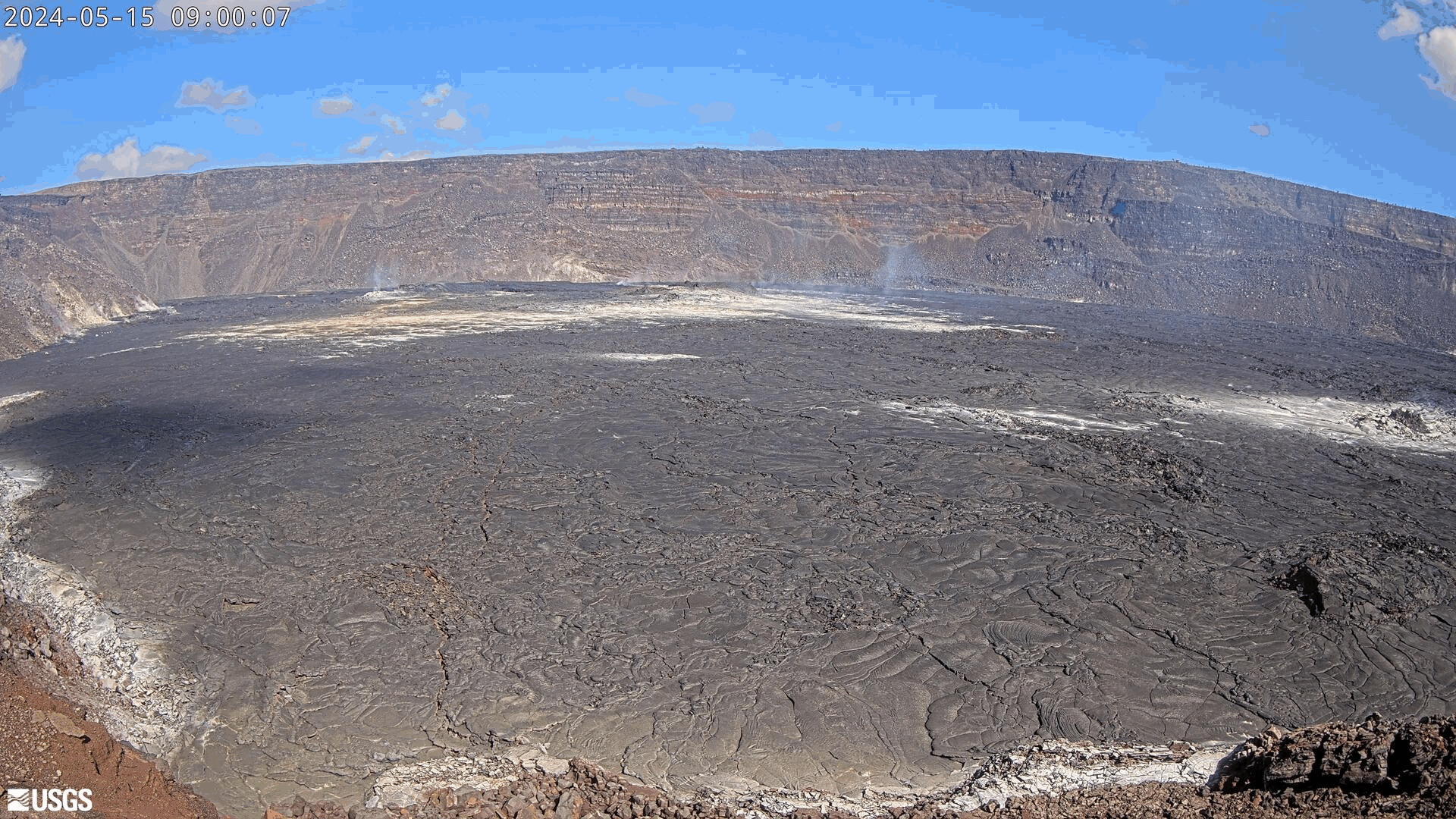Photo and Video Chronology – HVO deploys new webcam and monitoring equipment at Kīlauea summit – August 25, 2023
On August 25, 2023, HVO staff deployed a new webcam and survey equipment in Kīlauea's summit region. Kīlauea volcano is not erupting but earthquakes and ground deformation indicate that Kīlauea's summit region is becoming increasingly pressurized.
Hawaiian Volcano Observatory scientists deployed monitoring equipment with permission from, and in coordination with, Hawai‘i Volcanoes National Park. Several GPS instruments deployed in Kīlauea south caldera region will measure ground deformation during the ongoing unrest there. A new webcam provides views of Halemaʻumaʻu crater, where recent eruptions have occurred. Halemaʻumaʻu is a significant location to Native Hawaiian communities because it is the home of Pele.
New B2cam views Halemaʻumaʻu crater from the east rim and down-dropped block
View the new B2cam and 24-hour animated GIF here: [B2cam] Halemaʻumaʻu crater from the east rim and down-dropped block | U.S. Geological Survey (usgs.gov)
Kīlauea GPS survey equipment deployed in south caldera
Scientists temporarily deployed a handful of GPS instruments at established benchmarks; their recorded positions can be compared with those from previous years to discern subtle patterns of ground deformation associated with the ongoing earthquake and ground deformation activity.
Get Our News
These items are in the RSS feed format (Really Simple Syndication) based on categories such as topics, locations, and more. You can install and RSS reader browser extension, software, or use a third-party service to receive immediate news updates depending on the feed that you have added. If you click the feed links below, they may look strange because they are simply XML code. An RSS reader can easily read this code and push out a notification to you when something new is posted to our site.







